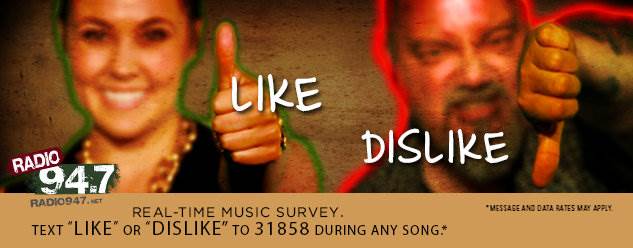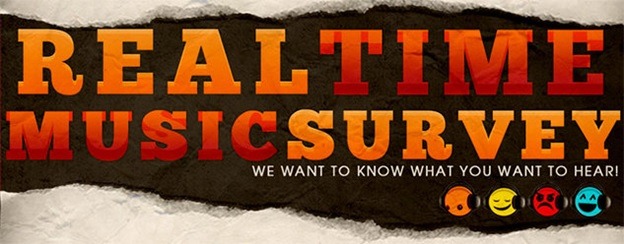As long as there have been request lines piping the voices of listeners into radio station air studios, there have been PDs saying things like: “These people represent a small portion of the audience” OR “Just because a song is being requested a lot doesn’t mean it’s a hit” OR “Don’t get distracted by the phones.”
And they were right. Considering the sporadic nature of request lines and DJs only answering them periodically, there wasn’t much data that was truly useful in the evolution of the music playlist.
 So how do today’s music stations integrate ongoing audience feedback in a way that is meaningful and even somewhat representative of the listening audience? With the vast majority of adults carrying a smartphone, many of which have an unlimited text plan, the potential to measure the audience’s opinion about songs in real-time as they are played is not only possible, it’s being done successfully.
So how do today’s music stations integrate ongoing audience feedback in a way that is meaningful and even somewhat representative of the listening audience? With the vast majority of adults carrying a smartphone, many of which have an unlimited text plan, the potential to measure the audience’s opinion about songs in real-time as they are played is not only possible, it’s being done successfully.
Lots of stations are engaged in online song voting, often mimicking the Pandora “thumbs up/thumbs down” model. But the challenge facing broadcast radio is to find ways to integrate technology into existing models in ways that truly resonate with the changing tastes and sensibilities of the audience – especially Millennials.
Thus, today’s “Radio’s Most Innovative” honor goes to Entercom’s Alternative KKDO in Sacramento. Even though the station is jockless, they’ve integrated the concept of real-time voting into the station’s programming, while also creating a unique barometer of the mood of the audience toward the station’s playlist.
It started with Operations Manager, Jim Fox, conceptualizing a system that allowed listeners to text “like” or “dislike” during any song. Working with then-Promotion Director Melissa Maxwell, a system was created where the results are tabulated and provide a running statistical commentary of the music the station plays.
The system works on two levels: giving KKDO listeners the feeling they have a voice in what the station plays, while also providing valuable real-time data that helps refine the station’s playlist. This sort of engagement is especially important for a station like KKDO that has no DJs. Thus, much of the “personality” comes from how Fox and how his team integrates “Like/Dislike” into the fabric of the station’s programming.
For this week’s edition of “Radio’s Most Innovative,” we asked Fox to elaborate on how the system works and what it’s meant to the growth of KKDO’s brand:
 JM: What inspired you to build the system? How did it come about, and who did it?
JM: What inspired you to build the system? How did it come about, and who did it?
JF: From its beginning in 2010, KKDO has boasted “No DJs,” so we are constantly on the lookout for digital engagement opportunities. In 2012, when KKDO Promotions Director Melissa Maxwell told me she could manipulate the “Now Playing” feature on our text platform to track audience reaction to the songs we played, it seemed like a perfect tool for engagement.
JM: How does the system work?
JF: Listeners text “like” or “dislike” during any song we play. Every week, we generate a report that reveals the average “like” percentage for every song. During a typical week, we will receive 6,000 to 8,000 unique texts. During the weeks when we conduct “Week-long, live, on-air, real time music surveys,” we see that number spike to 24,000 unique texts.
JM: What was the biggest hurdle you ran into building and implementing the system? How did you overcome it?
JF: Timing. The platform was not designed to be accurate to the second. Additionally, the reports are not simple to generate. Although any smart person could solve these problems, the KKDO solutions are proprietary.
JM: Can you talk about audience reactions to “Like/Dislike”?
JF: We knew “Like/Dislike” would be popular when we dedicated lots of on-air promotion for it, but we’ve been surprised to learn that participation remains heavy even at times when we are not hyper-focused on promoting it.
JM: How has the system impacted the music played on the stations?
JF: At launch, I had no intention of actually using the data. However, when the volume of texts remained high and the data was consistent week after week, I felt we’d be crazy not to use it.
JM: How does it affect the ramp up time for new songs?
JF: An interesting question. I’m constantly amused by occasions when traditional strategies are proven sound by new streams of information. This is true with “Like/Dislike.” Knowing a song will soon be a SMASH does not mean you can move it to power in the second week. Through trial and error, we’ve learned that if we move a song up in rotation too fast, we will kill it.
JM: How have the record labels reacted? Have they embraced it, are they worried, and how do you prevent people from gaming the system?
JF: As you can imagine, the reactions have been mixed. No one wants to hear that you’re dropping their song after two weeks. We try to be sensitive to this, but “Like/Dislike” can result in the loss of spins on KKDO.
JM: You’ve seen a lot of callout over the years. How does this compare and do you feel it’s a better reflection of what listeners are thinking?
JF: It’s not a replacement for callout. If you want to have good ratings, your must use the two together.
JM: What about beyond the music? How has it affected the station overall?
JF: It’s become almost as much a part of the KKDO brand as a popular personality is on many other stations. KKDO listeners genuinely believe we use the data and they should since we do.
JM: What have been some of the more creative ways you’ve used this on the air?
JF: Once each quarter, we host a “Week-long, live, on-air, real time music survey” which is essentially a greater level of promotion for the system. During those weeks, we watch the data in real time. When a song receives an unusually high percentage of dislikes, we will pull it off the air before it has finished playing. You’d think listeners would hate that, but we’ve found the exact opposite to be true.
JM: Beyond the Real Time Music Survey, what makes KKDO unique?
JF: In addition to “Like/Dislike,” certainly the “No DJs” strategy. Contrary to how it appears, this was never implemented as a cost saving measure. KKDO was created to be a complement to its sister – more appropriately its brother – KRXQ. It’s a kinder approach to the format that is closer to NPR than to most Alternative stations. Our gender balance is very close to 50:50. We limit the hourly commercial load and package many of our stopsets as “60-second commercial breaks”. Also, we will take musical risks. If we’ve made a mistake, “Like/Dislike” will warn us quickly and we will correct it.
Thanks to Mike Stern for writing this week’s “Radio’s Most Innovative.” Next Friday, we’re putting innovation on hold so that everyone can get a breather over the Thanksgiving holiday. “RMI” will return on 12/5.
INNOVATION QUOTE OF THE WEEK
“Everybody believes in innovation until they see it.
Then they think, ‘Oh no – that’ll never work. It’s too different.”
Nolan Bushnell, American engineer & entrepreneur
Check out some of our “Past Innovators” here:
- October 24 WTOP Digital
- October 31 Dr. Demento
- November 7 Joel Denver/All Access
- November 14 Mike Dougherty & Jelli
- Media And Technology In 2025: Believe It Or Not! - April 18, 2025
- In Radio, You Just Never Know - April 17, 2025
- The Secret To Making A Great Podcast (And Great Radio) - April 16, 2025








CONGRATS Jim and KKDO! I have been impressed with this campaign every since it’s inception. It’s so ridiculously smart. I’m glad to see they are being honored!
Thanks for the kind words, Emily.
Great article and a great idea, as long as a company doesn’t pay people to text over and like/dislike certain songs. But i liked it and while listening to the radio this morning, there were some great tunes for the audience. I also liked the presentation on their site with all the info about every artist and all the rest of course.
Dj’s could be added too. On-air personalities always seem to be more effective with the audience, without giving them guidance, but interacting Live with people.
Nice interview Fred.
Nick, I believe there are safeguards that prevent “ballot stuffing.” As for the DJs part of the conversation, I understand your point. But for KKDO, their owners also operates two other rock-formatted stations in the same cluster – both of which are very high-personality. It was a conscious effort on their part strategically to go the other way with a very lean presentation. “Like/Dislike” has actually become a big part of the station’s persona. Thanks for taking the time to chime in.